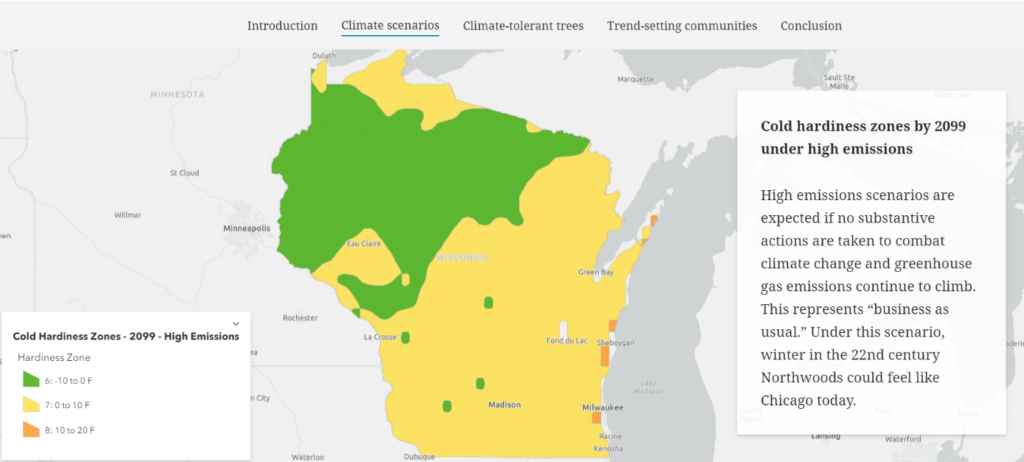By Dan Buckler, DNR Urban Forest Assessment Specialist, Madison, daniel.buckler@wisconsin.gov or 608-445-4578
Successfully planting a tree in an urban space is hard. There are so many factors to consider to ensure that the tree survives and thrives in its new home. Climate change may not be at the top of that list, but it should be one of the factors taken into consideration.
To help think through the topic, the Wisconsin Department of Natural Resources (DNR) has released a new story map that explores urban trees and climate change in Wisconsin.
The new resource is organized into three main sections. The first provides a brief overview of projected changes in Wisconsin’s climate over the past century, specifically highlighting shifts in cold hardiness zones and heat zones. Precipitation patterns and intensities have and are projected to continue changing, though precipitation is not featured in the story map’s overview. For more information on that, scroll down to the precipitation section on the DNR climate science page.

The second section highlights a dozen species that have promising futures under different climate change scenarios across seven Wisconsin communities, according to species vulnerability lists recently released by the Northern Institute of Applied Climate Science. These dozen species, which include somewhat common trees as well as a few rare ones, do not make up an exhaustive list, but are a sample selection of those expected to persist in the decades to come. Please talk to your local nursery or arborist for their suggestions tailored to your situation. And when possible, buy local!
Finally, the last section features four communities in different parts of the state which already plant many of those highlighted species. Feel free to reach out to those foresters for more information on how those trees are faring in their neck of the urban woods.
The species vulnerability lists and the story map can complement, but not replace, all of the considerations you have when selecting a tree to plant. It is very difficult to know what will thrive today and tomorrow, but if you do your research, speak to local experts and perhaps keep your fingers crossed, you will hopefully provide your tree with a good home for many years to come.
